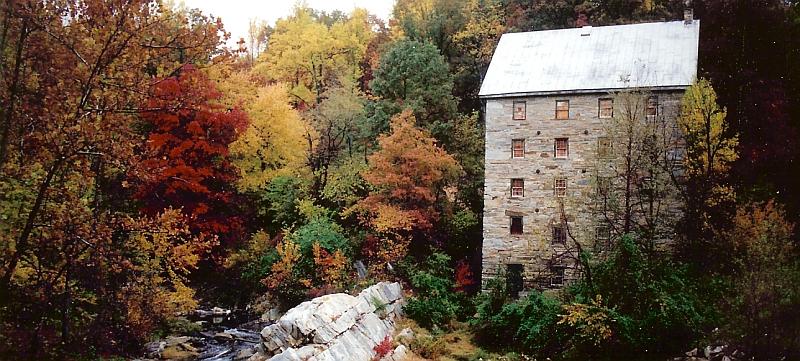

History of Chapman's MillThoroughfare GapThoroughfare Gap is a narrow gap between Bull Run and Pond Mountains, through which Broad Run flows as it descends 87 feet. The Gap was used by migrating buffalo and traveling Indians long before it became a transportation corridor for grain and goods between the Valley and the Atlantic. Mention of the Gap was first recorded in 1697, by a group of Marylanders passing through in search of a band of Piscataway Indians. Later Tidewater planters used the Gap as a route to the rich Shenandoah Valley. During wartime its use became even more strategic: it was an escape route during the French and Indian War, during the Revolutionary War it was the route east to join the army, and during the Civil War, it was a strategic passageway for both armies. At the time of the Spanish-American War in 1898, 10,000 American troops were stationed at the Gap to avoid a typhoid epidemic in Alexandria. For many years, the Gap has been a major east-west thoroughfare. Today, Interstate 66 takes thousands of people east and west in their travels, many commuting to the Washington, DC area to work. These travelers are able to see the charred walls of the mill. Hopefully, in the future they will be able to stop, safely explore the stabilized ruins and learn more about the mill and the surrounding area.
In 1759 Fauquier County was created from old Prince William County, and the related documents noted that the boundary between the two counties passed through the mill, as it does today. The prosperity of the mill was enhanced when, in 1852, the Manassas Gap Railroad was completed, passing beside the mill and reducing the travel time to Alexandria. In 1858 the Chapmans enlarged the mill, raising it to a total of seven stories and making it a model of agricultural technology. Chapman's Mill has ground cornmeal and flour for American troops during seven wars: The French and Indian, the Revolutionary, the War of 1812, the Civil War, the Spanish-American War, and World War I and World War II.
The Civil War On August 28, 1862 Union General Ricketts was ordered to occupy Thoroughfare Gap to prevent Generals Lee and Longstreet from marching through the Gap and joining Confederate troops gathering for the Second Battle of Manassas. Historians say that if Ricketts had prevailed at the Battle of Thoroughfare Gap, which took place in and around the mill, the Second Battle of Manassas would never have taken place. During much of the Civil War, Col. John S. Mosby and his Raiders traversed Thoroughfare Gap as they sought to disrupt the movement of Union provisions to their armies in the South. By 1876 the Beverley family had restored the ruins to a very successful milling operation and the mill took on their name. |
|
|
First posted Jul 8, 1999 Last update Jan 25, 2020 |